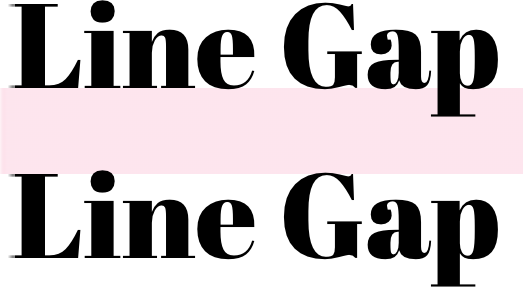
Security News
pnpm 10.0.0 Blocks Lifecycle Scripts by Default
pnpm 10 blocks lifecycle scripts by default to improve security, addressing supply chain attack risks but sparking debate over compatibility and workflow changes.
@capsizecss/core
Advanced tools
Flipping how we define typography


Capsize makes the sizing and layout of text as predictable as every other element on the screen.
Using font metadata, text can now be sized according to the height of its capital letters while trimming the space above capital letters and below the baseline.
npm install @capsizecss/core
createStyleObjectReturns a CSS-in-JS style object.
createStyleObject passing the relevant options.import { createStyleObject } from '@capsizecss/core';
const capsizeStyles = createStyleObject({
fontSize: 16,
leading: 24,
fontMetrics: {
capHeight: 700,
ascent: 1058,
descent: -291,
lineGap: 0,
unitsPerEm: 1000,
},
});
Note: It is recommended that you install the @capsizecss/metrics package and import the metrics from there:
import { createStyleObject } from '@capsizecss/core';
import arialMetrics from '@capsizecss/metrics/arial';
const capsizeStyles = createStyleObject({
fontSize: 16,
leading: 24,
fontMetrics: arialMetrics,
});
See the fontMetrics option documented below for more ways to obtain these metrics.
css prop.<div
css={{
// fontFamily: '...' etc,
...capsizeStyles,
}}
>
My capsized text 🛶
</div>
⚠️ Note: It is not recommended to apply further layout-related styles to the same element, as this will risk interfering with the styles used for the trim. Instead consider using a nested element.
createStyleStringReturns a CSS string that can be inserted into a style tag or appended to a stylesheet.
createStyleString passing the relevant options.import { createStyleString } from '@capsizecss/core';
import arialMetrics from '@capsizecss/metrics/arial';
const capsizedStyleRule = createStyleString('capsizedText', {
fontSize: 16,
leading: 24,
fontMetrics: arialMetrics,
});
style element and apply the specified class name.document.write(`
<style type="text/css">
${capsizedStyleRule}
</style>
<div class="capsizedText">
My capsized text 🛶
</div>
`);
⚠️ Note: It is not recommended to apply further layout-related styles to the same element, as this will risk interfering with the styles used for the trim. Instead consider using a nested element.
Capsize supports two methods of defining the size of text, capHeight and fontSize.
NOTE: You should only ever pass one or the other, not both.
capHeight: <number>Sets the height of the capital letters to the defined value. Defining typography in this way makes aligning to a grid or with other elements, e.g. icons, a breeze.

fontSize: <number>Setting the font size allows you to get all the benefits of the white space trimming, while still specifying an explicit font-size for your text. This can be useful when needed to match a concrete design spec or fitting into an existing product.

Capsize supports two mental models for specifying line height, lineGap and leading. If you pass neither the text will follow the default spacing of the specified font, e.g. line-height: normal.
NOTE: You should only ever pass one or the other, not both.
lineGap: <number>Sets the number of pixels between lines, as measured between the baseline and cap height of the next line.

leading: <number>Sets the line height to the provided value as measured from the baseline of the text. This aligns the web with how typography is treated in design tools.

This metadata is extracted from the metrics tables inside the font itself. There are a number of ways to find this information:
If using a Google Font or system font, install the @capsizecss/metrics package and import the metrics by name. For example:
import arialMetrics from '@capsizecss/metrics/arial';
If using a font from a file, install the @capsizecss/unpack package and extract the metrics from the font file directly. For example:
import { fromFile } from '@capsizecss/unpack';
const metrics = await fromFile(filePath);
Or, use the Capsize website to find these by selecting a font and referencing Metrics tab in step 3.
The core package also provides a few other metrics-based features for improving typography on the web:
Creates metrics-based @font-face declarations to improve the alignment of font family fallbacks, which can dramatically improve the Cumulative Layout Shift metric for sites that depend on a web font.
Consider the following example, where the desired web font is Lobster, falling back to Helvetica Neue and then Arial, e.g. font-family: Lobster, 'Helvetica Neue', Arial.
createFontStack from the core package:import { createFontStack } from '@capsizecss/core';
import lobster from '@capsizecss/metrics/lobster';
import helveticaNeue from '@capsizecss/metrics/helveticaNeue';
import arial from '@capsizecss/metrics/arial';
font-family CSS property.const { fontFamily, fontFaces } = createFontStack([
lobster,
helveticaNeue,
arial,
]);
The returned value contains the generated font face declarations as well as the computed fontFamily with the appropriately ordered font aliases.
The returned values can be templated into a stylesheet or a style block. Here is an example handlebars template:
<style type="text/css">
.heading {
font-family: {{ fontFamily }}
}
{{ fontFaces }}
</style>
This will produce the following CSS:
.heading {
font-family: Lobster, 'Lobster Fallback: Helvetica Neue',
'Lobster Fallback: Arial', 'Helvetica Neue', Arial;
}
@font-face {
font-family: 'Lobster Fallback: Helvetica Neue';
src: local('Helvetica Neue');
ascent-override: 115.1741%;
descent-override: 28.7935%;
size-adjust: 86.8251%;
}
@font-face {
font-family: 'Lobster Fallback: Arial';
src: local('Arial');
ascent-override: 113.5679%;
descent-override: 28.392%;
size-adjust: 88.053%;
}
If working with a CSS-in-JS library, the returned fontFaces can be provided as a JavaScript style object by providing styleObject as a fontFaceFormat option.
Here is an example using Emotion:
import { Global } from '@emotion/core';
const { fontFaces, fontFamily } = createFontStack(
[lobster, helveticaNeue, arial],
{
fontFaceFormat: 'styleObject',
},
);
export const App = () => (
<>
<Global styles={fontFaces} />
<p css={{ fontFamily }}>...</p>
</>
);
Also useful as a source for further manipulation given it is a data structure that can be iterated over or extended.
font-face propertiesAdditional properties can be added to the generated @font-face declarations via the fontFaceProperties option:
const { fontFamily, fontFaces } = createFontStack(
[lobster, helveticaNeue, arial],
{
fontFaceProperties: {
fontDisplay: 'swap',
},
},
);
This will result in the following additions to the declarations:
@font-face {
font-family: 'Lobster Fallback: Helvetica Neue';
src: local('Helvetica Neue');
ascent-override: 115.1741%;
descent-override: 28.7935%;
size-adjust: 86.8251%;
+ font-display: swap;
}
@font-face {
font-family: 'Lobster Fallback: Arial';
src: local('Arial');
ascent-override: 113.5679%;
descent-override: 28.392%;
size-adjust: 88.053%;
+ font-display: swap;
}
Worth noting, passing any of the metric override CSS properties will be ignored as they are calculated by Capsize. However, the size-adjust property is accepted to support fine-tuning the override for particular use cases. This can be used to finesse the adjustment for specific text, or to disable the adjustment by setting it to 100%.
Returns all the information required to create leading trim styles for a specific font size given the provided font metrics. This is useful for integrations with different styling solutions.
Accepts the same options as createStyleObject and createStyleString.
import { precomputeValues } from '@capsizecss/core';
import arialMetrics from '@capsizecss/metrics/arial';
const capsizeValues = precomputeValues({
fontSize: 16,
leading: 24,
fontMetrics: arialMetrics,
});
// => {
// fontSize: string,
// lineHeight: string,
// capHeightTrim: string,
// baselineTrim: string,
//}
Return the rendered cap height for a specific font size given the provided font metrics.
import { getCapHeight } from '@capsizecss/core';
import arialMetrics from '@capsizecss/metrics/arial';
const actualCapHeight = getCapHeight({
fontSize: 24,
fontMetrics: arialMetrics,
});
// => number
To make the retrieval of font metrics easy, Capsize provides the @capsizecss/metrics package containing all the required data for both system and Google fonts.
npm install @capsizecss/metrics
See the package for documentation.
If you are using a custom font or one not included in the @capsizecss/metrics package, Capsize provides the @capsizecss/unpack package to extract the required data either via a URL or from a local file.
npm install @capsizecss/unpack
See the package for documentation.
MIT.
FAQs
Flipping how we define typography
The npm package @capsizecss/core receives a total of 29,925 weekly downloads. As such, @capsizecss/core popularity was classified as popular.
We found that @capsizecss/core demonstrated a healthy version release cadence and project activity because the last version was released less than a year ago. It has 2 open source maintainers collaborating on the project.
Did you know?

Socket for GitHub automatically highlights issues in each pull request and monitors the health of all your open source dependencies. Discover the contents of your packages and block harmful activity before you install or update your dependencies.

Security News
pnpm 10 blocks lifecycle scripts by default to improve security, addressing supply chain attack risks but sparking debate over compatibility and workflow changes.

Product
Socket now supports uv.lock files to ensure consistent, secure dependency resolution for Python projects and enhance supply chain security.

Research
Security News
Socket researchers have discovered multiple malicious npm packages targeting Solana private keys, abusing Gmail to exfiltrate the data and drain Solana wallets.